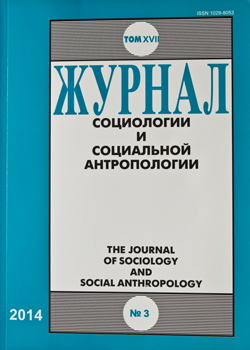On the Way to the Normative Model of Relationships between Society and Older People
Keywords:
Abstract
Population aging has become one of the most urgent problems of modern societies. Older adults are seen by many as a growing vulnerable group of helpless, precarious, unable to make decisions people. In fact, this attitude has led to the exclusion of older people from almost all forms of active social life, from different social networks and most importantly from the opportunity of employment, especially in non-manual sector. Representations of what older people may do and where they can work used to be the images of low-paid, uninteresting, monotonous work. Such representations typically portrayed older people either as “sitting” (e.g., working as a cloakroom attendant) or, conversely, overly acting (e.g., being engaged in cleaning work). However, in recent years this situation has changed, older people are more likely to be considered as a “resource” of society, than a “burden”, particularly in a situation of extended working life. The employment rate of older people has increased in Russia. In the labor market there are jobs that can be performed by people under 70 years old. Continued employment in various forms is an important indicator of social inclusion of older people and complies with the normative concepts of balanced society development — “society for all ages”.
Published
2014-02-20
How to Cite
Grigoryeva, I., Bershadskaya, L., & Dmitrieva, A. (2014). On the Way to the Normative Model of Relationships between Society and Older People . ZHURNAL SOTSIOLOGII I SOTSIALNOY ANTROPOLOGII (The Journal of Sociology and Social Anthropology), 17(3), 151–167. Retrieved from http://jourssa.ru/jourssa/article/view/663
Section
Social Policy

